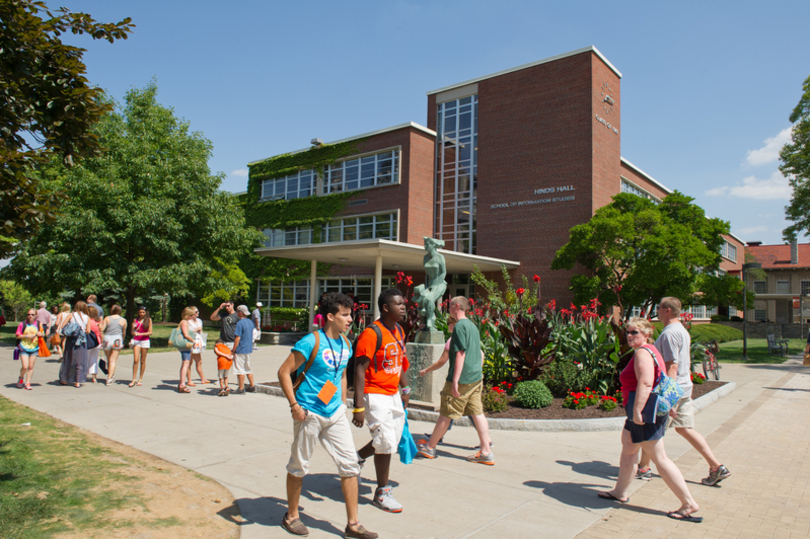Study: Online education enrollment rates increase, traditional college enrollment rates remain stagnant

Courtesy of SU Photo and Imaging Center
The School of Information Studies' online master's program was ranked no. 13 in the nation by U.S. News.
UPDATED: Jan. 23, 2018 at 5:18 p.m.
Enrollment in nonprofit education programs is growing while for-profit enrollment rates are dropping significantly, a new federal study shows.
Affordability, flexibility and quality of education are some benefits of enrolling in an online program, Shai Reshef, president of the University of the People, said in an email. UoPeople is an online nonprofit, tuition-free, accredited institution.
Online students are usually an average age of about 32 at the undergraduate level and 35 at the graduate level, he said.
From 2012 to 2016, student enrollment in at least one distance learning course has increased by 1.2 million, according to Inside Higher Ed.
“What is clear to me is the reason for higher enrollment in nonprofit education,” Reshef said. “I believe reputation is key here and reputation is continually the highest-ranked selection criteria for students when picking out universities.”
Data from Inside Higher Ed showed that the enrollment rate of students taking at least one remote online course at Kaplan University, a for-profit online university, dropped by 7,837 from 2015 to 2016. University of Phoenix, another for-profit online university, lost more than 32,000 students within that same timeframe, Inside Higher Ed reported.
Last May, Kaplan University was sold to Purdue University for $1, and for-profit online college DeVry University was sold to Cogswell Education, as reported by NPR.
Representatives of DeVry University and University of Phoenix declined requests for comment and a representative of Kaplan University did not respond to a request for an interview.
At Syracuse University, the School of Information Studies was recently ranked 13th in the nation by U.S. News and World Report for its online graduate computer information technology program.
“Students are receiving the same content, but in a more condensed and different process,” said Victoria Williams, director of the iSchool’s online education program.
The school continues to improve its program by offering interactive live classrooms and full access to academic and career advisors, she said.
While the traditional college educational model is divided into semesters, online degrees are split into quarterly structures, Williams said. Degrees are also not specified as online programs upon completion.
Williams added that the iSchool also allows students at SU, in colleges other than the iSchool, to take online courses.
Nonprofit programs such as UoPeople have also started to utilize new business models.
Offering tuition-free courses is how UoPeople tries to shrink the “achievement gap across different sectors of society,” Reshef said.
UoPeople has enrolled more than 12,000 students, and the college expects that number to double within the next year, Reshef added.
“Online education is a solution to closing that gap and an equalizer in the playing field so that everyone can have the same opportunity for a quality education that is both accessible and affordable,” Reshef said.
CORRECTION: In a previous version of this post, University of the People was misnamed. The Daily Orange regrets this error.




